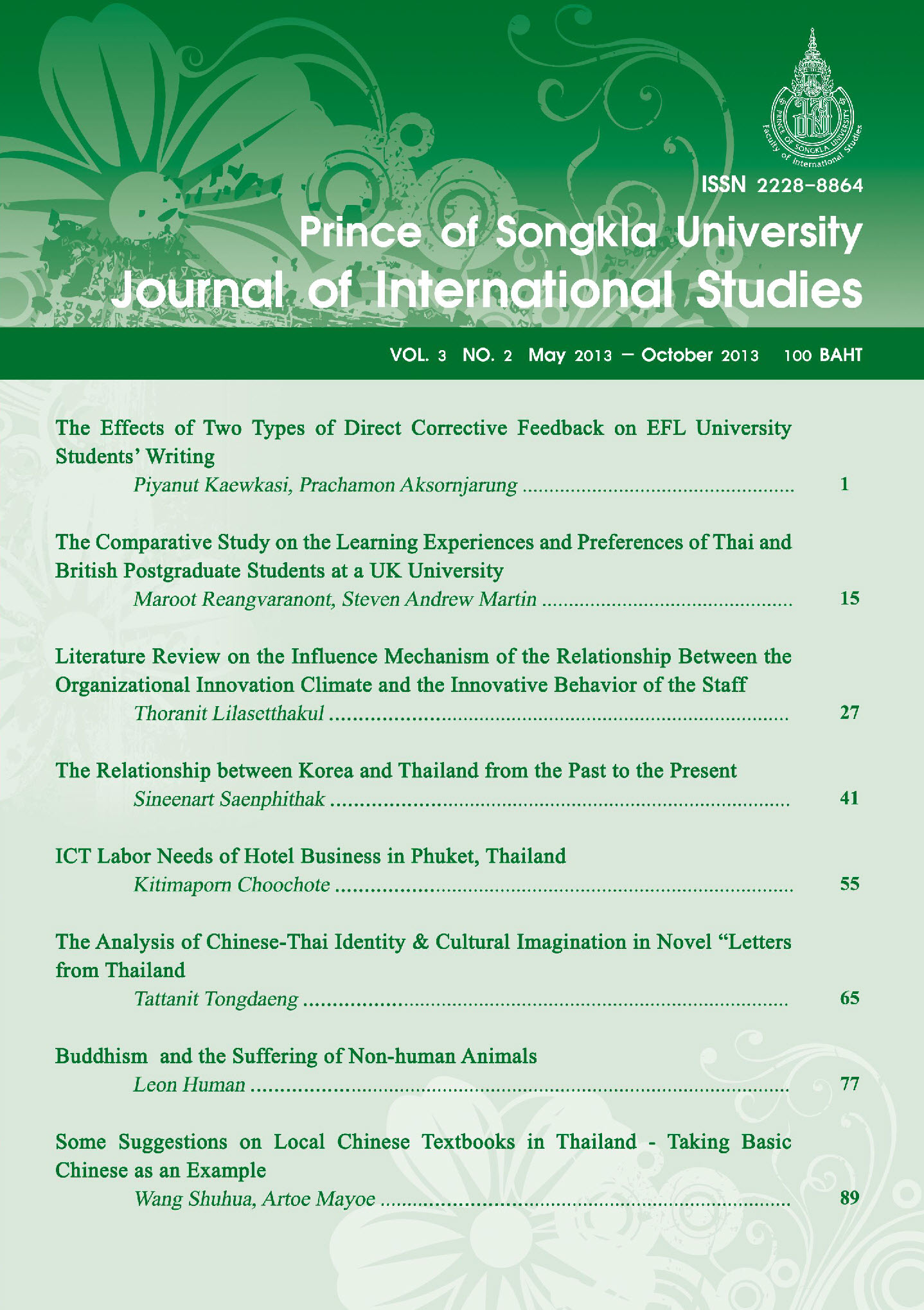Literature Review on the Influence Mechanism of the Relationship Between the Organizational Innovation Climate and the Innovative Behavior of the Staff
Main Article Content
Abstract
With an attempt to encourage both public and private organizations in Thailand to develop their organizational innovation climate, to strengthen the innovative behavior of the staff within the organizations, and thus the organizations can obtain some competitive advantages and be able to firmly participate in the ASEAN market, this paper has summarized some importance research results which emphasized the relationship between organizational innovation climate and the innovative behavior of the staff. This paper also discussed some factors that could mediate or strengthen the relationship between the two parties. Finally, some new research aspects in the related field were provided.
Article Details
Statements and opinions expressed in articles herein are those of the authors and do not necessarily reflect the position of the editors or publisher.
Article, information, text, image, etc. which are published in Journal of International Studies, belong to Journal of International Studies. If anybody or any organization would like to use part or whole of them, they must receive written permission from Journal of International Studies before usage.
References
Amabile T. M. (1993). Motivational synergy: Toward new conceptualizations of intrinsic and extrinsic motivation in the workplace. Human Resource Management Review, 3: 185-201.
Amabile T. M., Conti R., Coon H., Lazenby J. & Herron M. (1996). Assessing the work enviornment for creativity. Academy of Management Journal, 39(5): 1154-1184.
Amabile T. M. (1997). Motivating creativity in organizations: On doing what you love and what you do. California Management Review, 40(1): 39-58.
Amabile T. M. (2004). Leader behaviors and the work environment for creativity: Perceived leader support. The Leadership Quarterly, (15): 5-32.
Anderson N., West M. A. (1996). The Team Climate Inventory: Development of the TCI and its Applications in Teambuilding for Innovativeness. European Journal of Work and Organizational Psychology, 5: 53-66.
Anderson N., West M. A. (1998). Measuring climate for work group innovation: Development and validation of the Team Climate Inventory. Journal of Organizational Behavior, 19, 235-258.
Bandura A. (1986). Social foundations of thought and action: A social cognitive theory. New Jersey: Englewood Cliffs.
Bear M., Frese M. (2003). Innovation is not enough: Climate for initiative and Psychological safety, process innovations, and firm performance. Journal of organizational behavior, 24(1): 45-68.
Conger J. A., Kanungo R. N. (1988). The empowerment process: Integrating theory and practice. Academy of Management Review, 13: 471-482.
Edmondson A. (1999). Psychological safety and learning behavior in work teams. Administrative science quarterly, (44): 350-383.
Ekavll G. (1996). Organizational climate for creativity and innovation. European Journal of Work and Organizational Psychology, 5: 105-123.
George J. M., Brief A. P. (1992). Feeling good-doing good: A conceptual analysis of the mood at work organizational spontaneity relationship. Psychological Bulletin, 112: 310-329.
George J. M., Zhou J. (2002). Understanding when bad moods foster creativity and good ones don't: The role of context and clarity of feelings. Journal of Applied Psychology, 87: 687-697.
George J. M., Zhou J. (2007). Dual tuning in a supportive context: Joint contributions of positive mood, negative mood, and supervisory behaviors to employee. Academy of Management Journal, 50(3): 605-622.
Gist M. E., Mitchell T. R. (1992). Self-efficacy: A theoretical analysis of its determinants and malleability. Academy of Management Review, 17: 183-211.
Gong Y. P., Huang J. C. & Farh J. L. (2009). Employee learning orientation, transformational leadership, and employee creativity: The mediating role of employee creative self-efficacy. Academy of Management Journal, 52(4): 765-778.
Madjar N., Oldham G. R & Pratt M. G. (2002). There's no place like home? The contributions of work and nonwork creativity support to employees' creative performance. Academy of Management Journal, 45: 757-767.
Madjar N., Oldham G. R. (2002). Preliminary tasks and creative performance on a subsequent task: Effects of time on preliminary tasks and amount of information about the subsequent task. Creativity Research Journal, 14: 239-251.
May D. R., Gilson R. L. & Harter L. M. (2004). The psychological conditions of meaningfulness, safety and availability and the engagement of the human spirit at work. Journal of Occupational and Organizational Psychology, 77: 11-37.
Oldham G. R., Cummings A. (1996). Employee Creativity: Personal and Contextual Factors at Work. Academy of Management Journal, 39(3): 607-634.
Scott S.G. & Bruce R.A. (1994). Determinants of innovation behavior: A path model of individual innovation in the workplace. Academy of Management Journal, 37: 580-607.
เฉินกว๋อฉวน. (2008). ความสามารถของคนในการศึกษาเรียนรู้ภายใต้สิ่งแวดล้อมที่เปลี่ยนแปลงชับซ้อน: แนวคิด รูปแบบ การวัดและผลกระทบ. วิทยาการจัดการแห่งประเทศจีน, 16(1). 147-157.


